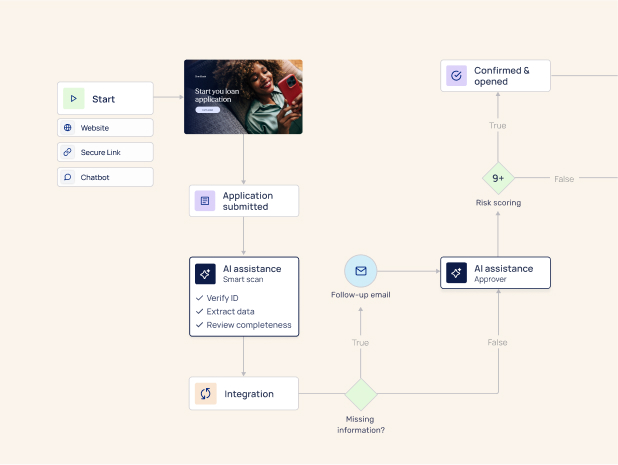The insurance industry has always been about predicting and managing risks, from natural disasters to car accidents. However, the methods employed for risk assessment and loss control have historically been limited by the available technology and data. Today, that’s changing with the introduction of Virtual Reality (VR). In this blog post, we delve into how this immersive technology is set to revolutionize risk assessment and loss control in the insurance industry.
What is Virtual Reality?
Virtual Reality (VR) is a computer-generated simulation of a three-dimensional environment that can be interacted with in a seemingly real way. It employs specialized hardware, like headsets and handheld controllers, to create an immersive experience, often providing visual, auditory, and sometimes even tactile feedback.
Integration of VR and IoT: The game changer
The integration of VR and the Internet of Things (IoT) is a game changer for the insurance industry. By leveraging both technologies, insurers can significantly cut down on expenses associated with inspections and loss control.
For example, IoT sensors can be used to monitor various physical properties at the point of inspection, such as temperature, humidity, and motion, all in real time. This data is then sent to a VR interface where it can be visualized in an immersive environment. By using VR headsets, insurers can virtually “walk” through a property or an accident scene, gaining crucial insights into how the event happened and what should be done to prevent similar incidents in the future without having to be physically present
How can VR make a difference?
Realistic simulations for accurate assessment
Virtual Reality can simulate various real-world scenarios that help insurers better understand and quantify risk. For instance, VR can mimic the conditions of a flood-prone area, allowing assessors to evaluate the potential damage to properties.
Enhanced training for loss control
VR can serve as a training tool for loss control agents and clients. Virtual environments can recreate scenarios like fire safety, earthquake preparedness, or even road safety measures, offering a realistic training ground that would be impractical to replicate otherwise.
Cost-effectiveness
Virtual Reality can cut down on the travel and time required for field inspections, providing a more cost-effective method for risk assessment.

Real-world applications in insurance
- Property Insurance:
- VR can simulate building structures, helping to identify possible weaknesses and calculate accurate premiums.
- VR can help agents visualize a property remotely, aiding in assessing potential risks and determining the correct coverage.
- Auto Insurance:
- A VR simulation can test various accident scenarios to assess the effectiveness of safety measures and potentially advise on insurance pricing.
- Using VR, insurers could simulate various driving conditions to evaluate the skills of a driver, which could influence policy premiums.
- Health Insurance:
- VR simulations can be used to train medical professionals in procedures, reducing the likelihood of medical malpractice and related claims.
- Rehabilitation: VR can be used for physical therapy exercises, monitored by the insurance company to ensure adherence and recovery, affecting claims and premiums.
- Mental Health Support: VR can offer therapeutic interventions that could be covered by health insurance plans.
- Business Interruption Insurance: Simulate various disaster scenarios to assess how long a business might be out of operation and what the financial implications could be.
VR applications throughout the policy lifecycle
Training and development
- Claims Adjusters Training: Virtual scenarios can provide claims adjusters with realistic experiences, preparing them for the variety of situations they might encounter in the field.
- Agent Training: VR can offer an interactive way to educate agents about complex insurance products, helping them to better communicate these to customers.
Customer engagement
- Virtual Office Visits: VR can simulate a meeting with an insurance agent, enabling discussions and product demonstrations.
- Interactive Product Demos: Customers can better understand insurance offerings through interactive VR experiences that explain various scenarios where insurance may be necessary.
Fraud detection
- Crime Scene Recreation: VR can help recreate an accident or crime scene to understand the series of events, which could aid in identifying fraudulent claims.
Claims processing
- Remote Inspections: Claims adjusters can perform virtual inspections of damaged properties, cars, or other insured items, cutting down the time needed to settle a claim.
- Customer Experience: After a claim is filed, VR can offer customers a walkthrough of the repair or replacement process, setting accurate expectations.
Marketing and policy distribution
- Virtual Policy Distribution: Potential customers can use VR to enter a virtual insurance marketplace where they can browse different coverage options, compare prices, and even consult a virtual agent.
- Interactive Advertisements: Brands can create VR experiences that educate potential clients about why they might need insurance, guiding them through simulated life events.
Business operations
- Data Visualization: Complex data sets, like actuarial tables, can be visualized in a 3D space, making them easier to understand and analyze.
- Remote Collaboration: Teams can meet in virtual spaces to discuss strategies, plans, or review cases, providing a more interactive experience than traditional video conferencing.
The future: integrating VR and IoT
The integration of VR and IoT technologies in the insurance industry has barely begun, with only a few insurers exploring the power of these two powerful tools to reduce costs and offer better protection. As these emerging technologies become more advanced, it is likely that we will see a broader adoption of these technologies by insurance companies around the world.





